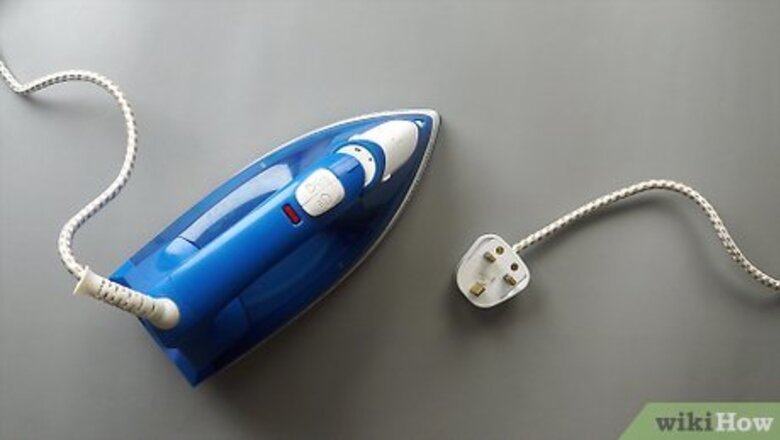
views
- Loosen white residue in the holes of the soleplate with a toothpick, toothbrush, or cotton swab.
- Fill the water reservoir with a water-vinegar mixture. Heat up the iron and press the "steam" button for 20-30 seconds. Repeat until steam flows freely.
- Apply a baking soda-vinegar paste to the soleplate and scrub gently using circular motions. Then, rinse the soleplate with clean water.
Unclogging the Water Reservoir
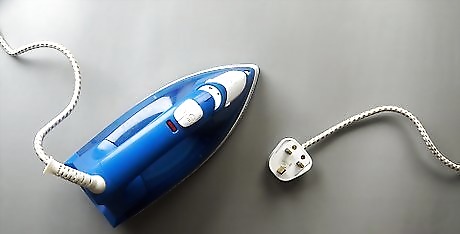
Unplug and cool the iron. Before you begin, make sure the iron is unplugged. Allow it to cool off completely before you start. This can ensure you don’t burn or electrocute yourself when adding the vinegar.
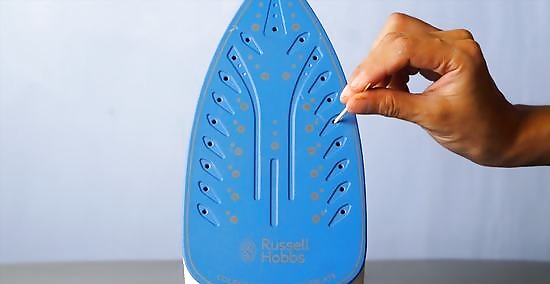
Inspect the steam ducts. Check for white residue in the holes, or steam ducts, on the iron’s soleplate. Remove any residue you see using a wood or plastic toothpick, toothbrush, or cotton swab. This can help your vinegar mixture better clean the reservation and its ducts onto the plate. Avoid using anything metal to remove residue because this can scratch the iron’s surface.

Fill the water reservoir with vinegar mixture. Mix one quarter cup (60ml) white vinegar and ¾ cup (180ml) distilled water in a cup with a spout. With the iron upright, pour this mixture into the water reservoir until it is about one-third full. Use a larger amount of distilled white vinegar or only vinegar for very clogged irons.

Heat up your iron. Plug in your iron again and set it to the steam feature. The heat setting should be at medium to high. Allow it to heat for at least 5 minutes. This flushes out mineral deposits and makes it easier to clean the ducts.

Press the steam button. Now it’s time to really let the vinegar work its magic. Push down on the steam button and hold it for 20-30 seconds. Repeat at least 6 times, or until the steam flows freely from your iron.
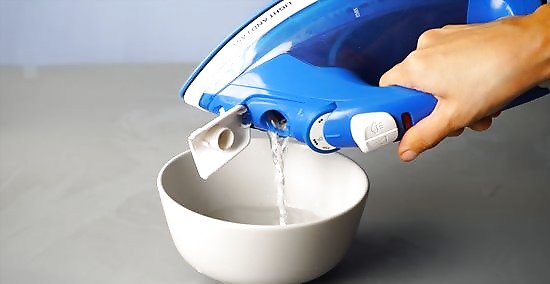
Empty the iron. Unplug your iron again and let it cool off completely. Then pour out any remaining vinegar/water mixture. This ensures that you remove mineral buildup in the reservoir.
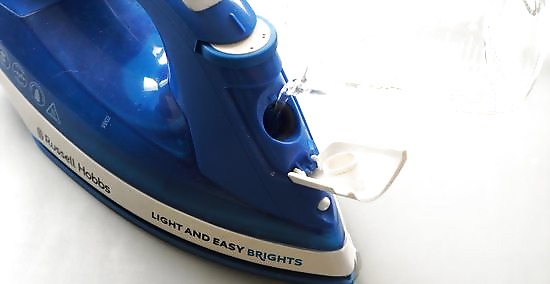
Rinse the reservoir. Fill the reservoir with one cup (240ml) plain, distilled water. Turn on the iron again and hold the steam button again. This will clear any traces of remaining mineral deposits or vinegar.
Removing Residue on the Soleplate

Ensure the iron is unplugged and cool. Before you begin cleaning, make sure that your iron is unplugged and cooled off. This can ensure that you don’t burn or electrocute yourself while cleaning.
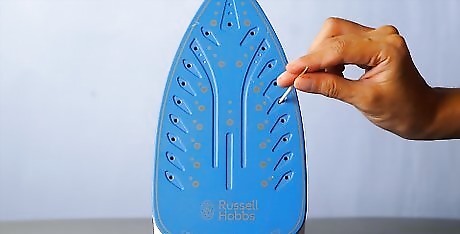
Clear residue from steam ducts. White residue in the holes of the soleplate is often mineral deposit. Before you clean the soleplate, use a wood or plastic toothpick, toothbrush, or cotton swab to remove this. This allows the vinegar mixture to penetrate and clean the iron’s surface. Avoid using metal tools to clean visible deposits. This can scratch the surface of the iron.

Make a vinegar paste using salt or baking soda. Mix equal parts table or kosher salt or baking soda and distilled white vinegar. Stir them into a paste to scrub starch, mineral deposits, and or sizing residue from your iron’s soleplate.

Scrub the soleplate. Dip a clean, white cloth into the paste. Moving in circles, rub the mixture over the soleplate. Use slightly more pressure for heavily soiled soleplates. Scrub the steam duct opening with a dab of the paste on a cotton swab. This allows you to more effectively clear away any residue or deposits.

Rinse off the soleplate with plain water. Wet a separate clean, white cloth. Wipe the surface of the soleplate to remove the paste and any residue or deposits. Repeat scrubbing and rinsing as necessary to remove all of the buildup.

Avoid using harsh scrubs. Never scrub or rub your iron soleplates with a scouring pad, steel wool or abrasive cleansers. You should also gently scrub the surface. Doing this can ensure that you don’t scratch the surface, which can lead to rusting and further staining.










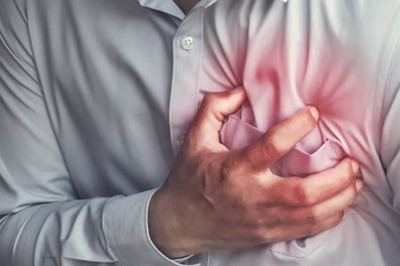






Comments
0 comment